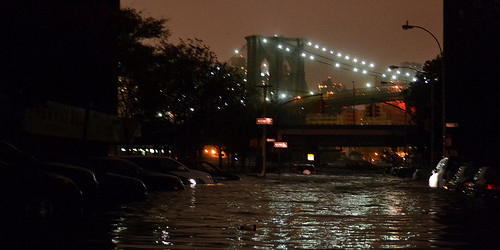Prepare yourself for possible changes to your flood policy

25% of all flood insurance claims for the National Flood Insurance Program are filed by people who don’t live in a high-risk flood zone.
FEMA is in the process of a nationwide flood zone remapping project that may affect your flood policy.
WHAT IS FLOOD ZONE REMAPPING?
It’s a multi-year initiative by FEMA that will update flood zone maps in more than 20,000 communities across the country. As a result, FEMA will produce detailed, digital flood insurance maps that will:
• Help communities manage flood risk and disaster recovery
more efficiently
• Provide accurate information for homeowners, business
owners and other key stakeholders to make choices regarding
personal and financial protection
WHY IS IT HAPPENING?
FEMA is updating flood zone maps to more accurately reflect the risk of flooding, which has changed over time due to landscape changes. Landscapes change due to building development, weather patterns, surface erosion, spring thaw, wildfires, decay of dams and levees, and other natural forces. These changes can alter floodplain boundaries, water flow and drainage patterns – which can lead to higher or lower risk of flooding for property owners.
WHEN WILL IT OCCUR?
Remapping is occurring now and will continue for years. There’s usually a period of one to two years between the time the new “preliminary” maps are issued and the time that they’re implemented. This should provide adequate time to talk with your agent, review your options and protect your property.
HOW WILL IT AFFECT ME?
With the updates to flood zone maps, your property may be remapped to a higher or lower-risk zone. It may also remain unchanged. Take a look at the snapshot below to see how this may affect you.
IF REMAPPED TO A HIGHER-RISK FLOOD ZONE
This means you have an increased risk of flooding. It’s in your best interests to:
• Insure your property for the higher risk. You may need to purchase or convert to a different rate structure for flood insurance. If you hold a mortgage, your lender will require you to have flood insurance. This requirement applies to all federally regulated lenders and government-sponsored enterprises, such as Freddie Mac and Fannie Mae.
• Get flood coverage ahead of the remapping effective date to avoid force-placed coverage. If you don’t proactively acquire flood insurance on your own, your lender may purchase coverage on your behalf (force-placed coverage). Lenders will “force place” coverage in situations where a borrower either:
• Does not obtain required flood insurance when a zone changes from low to high risk, or
• Allows flood insurance coverage to lapse after the loan is made
• Look into cost-saving options. You may be able to save money on your insurance premiums by taking advantage of the procedure for properties Newly Mapped into the Special Flood Hazard Area (SFHA).*
• Contact your flood insurance agent for assistance. Your agent can inform you of your options and answer your questions.
IF REMAPPED TO A LOWER-RISK FLOOD ZONE
This means you have a low risk of flooding, but your risk isn’t eliminated. Your mortgage lender will no longer require flood insurance, but it’s in your best interests to: • Maintain flood coverage. That way you can continue protecting your property against all flood risks.
• Contact your agent to determine if you’re eligible for reduced insurance rates. If eligible, your agent can convert your policy to a Preferred Risk Policy (PRP).
• You may be eligible for reduced insurance rates.
• You may receive a refund for premiums already paid.
• Contact your flood insurance agent for assistance. Your agent can guide you on the best course of action for your situation.
IF REMAPPING DOESN’T AFFECT YOUR FLOOD ZONE
This means there is no change to your risk of flooding, and your flood insurance rates won’t be affected by remapping.
WHY IS IT IMPORTANT TO MAINTAIN FLOOD COVERAGE?
Remapping might mean increased exposure to the risk to and damage from flooding events or it might improve your current flood zone situation. The government allows for “grandfathering,” a reduction in rates for those who maintain flood insurance. If you already have flood insurance, maintaining the policy will allow you to keep a reduced rate through grandfathering. However, if the new mapping is more favorable, you may prefer to change to the new zone rate.
If you’re eligible for a PRP before the new maps are adopted with higher-risk zones, you can buy a PRP now and then it can be converted using the following:
- Procedure for properties Newly Mapped,* or
- A standard policy with a “grandfathered” zone at a reduced rate Also remember that every property is in a flood zone, but with differing potential for claims from future flooding events. Since 2010, the U.S. has experienced a significant increase in the number of major flooding events affecting every region in the U.S. Most areas had not experienced previous flood losses, and many came from low- to moderate-risk flood zones. So, for these and many more reasons, it’s important to maintain your flood insurance.
Remember, there’s typically a 30-day waiting period – from date of purchase – before a new flood policy goes into effect. So, be sure to get a flood insurance policy now – before you need it.

